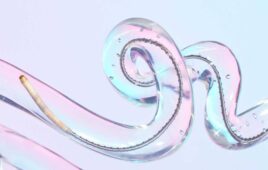The EU-funded DENECOR project was launched in 2013 in order to address a key challenge facing cutting edge nano-electronic neuromodulation devices. These are minute therapeutic implants that are designed to stimulate nerve activity and help patients suffering neurological conditions to recover certain functions.
The problem is that while these devices have been shown to offer significant patient care benefits, many are incompatible with current diagnostic systems, such as Magnetic Resonance Imaging (MRI) scanners. No neuromodulation system currently available on the market is certified as ‘MRI’ safe, and electronic neuromodulation therapy is typically perceived of as being a last-resort because of this incompatibility. This has inhibited their widespread implementation.
The key objective of the DENECOR project has therefore been to tackle incompatibility issues between Active Implanted Medical Devices (AIMD) and certain diagnostic systems. This will lead to improved healthcare and increased market acceptance of new therapeutic devices.
In order to achieve this, the project has carried out various tests, including a demonstration of an MRI-compatible Transcranial Magnetic Stimulator (TMS) therapeutic device. New sensor and packaging technology for invasive and non-invasive neural sensing, again compatible with MRI, has also been developed, along with new develop methods to independently test the compatibility of therapeutic and diagnostic devices.
The project’s work will now feed into recommendations for both AIMD and MRI manufacturers, as well as for companies involved in other high-tech medical fields such as ultrasound imaging and non-invasive neuromodulation devices. This could also be helpful in the development of future standards and technical specifications that address diagnostic and therapeutic systems.
The project comes at a critical time for Europe. An ageing population means that incidences of neurological diseases like Parkinson disease and epilepsy are far more likely, leading to increased social and healthcare costs.
In addition, healthcare professionals forecast a strong increase in co-morbidity – the presence of one or more diseases in addition to a primary disease – as Europe gets older. If several diseases affect the same patient at the same time, diagnostic techniques and therapies for one condition may be incompatible with techniques needed to address another.
Demonstrating the coexistence by design of implanted neuromodulation therapy devices and key diagnostic systems will therefore make a significant contribution towards better and more efficient healthcare provision. At present for example, late-stage patients with Parkinson’s neurodegenerative diseases can only undergo MRI scans of a very restricted nature after implantation of neuromodulation devices.
The coexistence of therapeutic and diagnostic devices and systems is also important because the effectiveness and efficiency of therapeutic treatments can be multiplied by the simultaneous registration of neuronal functions.
Finally, the project will provide a significant boost to Europe’s vitally important healthcare sector. Providing strong evidence of efficacy and safety will lead to further take up of neuro-stimulation therapies and strengthen European intellectual property in the field. This will enable European firms to increase their market share in therapeutic devices and strengthen their global position in diagnostic systems at the same time.




